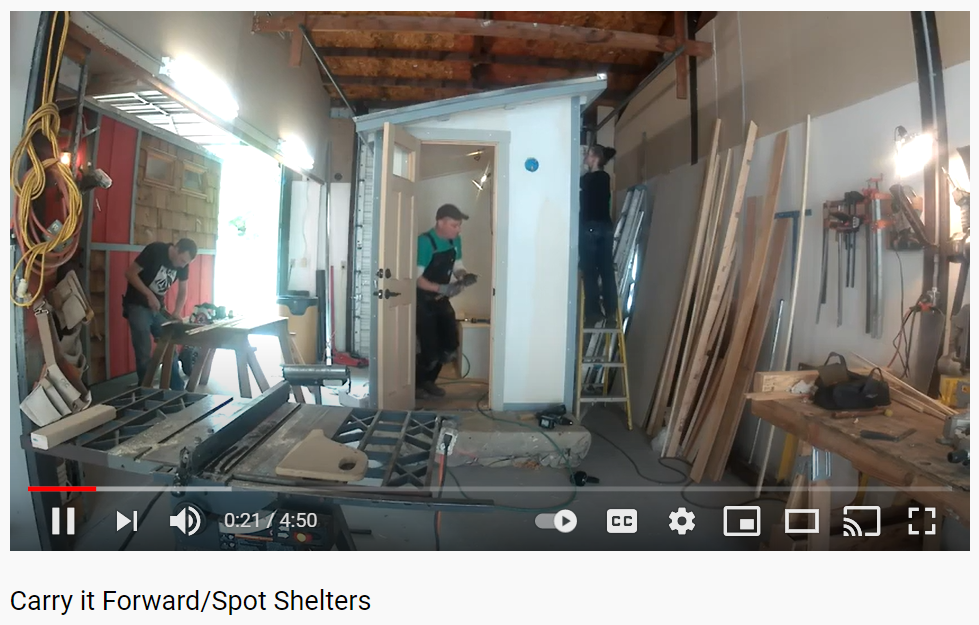Workforce Development Programs
Positive, Growth-Oriented, Participant Focused
Helping the community - housed and unhoused
Workforce development participants in the SPOT, STAR, and PAVE programs are unhoused at entry and are provided temporary shelter, wrap-around services, and vocational training in our service projects that improve conditions for homeless people.
Our current cohort represents different cultural backgrounds, abilities, and a wide range of ages. All PAVE members contribute skills, knowledge, and experience that shapes our programs.
SPOT (Shelter Prioritizing Onward Traction)
This program does not include a vocational component but focuses on the first steps to stabilization after getting off the street. Currently, we implement SPOT at three sheltering sites we manage. Once someone has reached basic stabilization, they can enter PAVE (or move on to external opportunities).
PAVE (Personally Assessed Vocational Engagement)
PAVE begins with goal-setting, looking holistically at skills/strengths and challenges, resources and needs, and future goals of the individual. It starts with stipended volunteer work in one of our service projects, building worker capacity to maintain a steady schedule, coupled with weekly meetings with peer and/or case managers to work on health/wellbeing goals. As the worker engages, establishes schedules, makes progress towards goals, and demonstrates increased skill-building, to the point of being able to maintain a consistent steady schedule and positive contributions to the workplace, they can be eligible for STAR training.
STAR (Support Training Achieve Recruitment)
STAR is a training level that will lead directly into employment in our organization, through specialized engagement and lived-experience-focus. This includes First Aid/CPR and Narcan administration, as well as Harm-Reduction, De-escalation, Peer Support, and Trauma-Informed Care models. STAR graduates will be eligible for full-time employment.
microapprenticeships
In the construction of the tiny units in our SPOT Shelter Project, Carry it Forward provides valuable training opportunities in construction techniques.
We are working with local school districts and youth shelters to develop a curriculum for Career Technical Educational programs and vocational enrichment programs and with Connected Lane County, a local nonprofit creating opportunities for student success by helping youth to connect the relevance of their classroom learnings to their lives beyond graduation.
In addition to welding, electric, roofing, and insulation techniques, our workers gain an understanding of the homelessness services system and its complexities in Lane County, and develop increased empathy for people experiencing homelessness.
Matching shelter residents with community programs and hosts is a key component in its overall product design, as is advocacy and outreach, and collaborative work with community stakeholders to gain acceptance for communities of these alternative shelter types.



